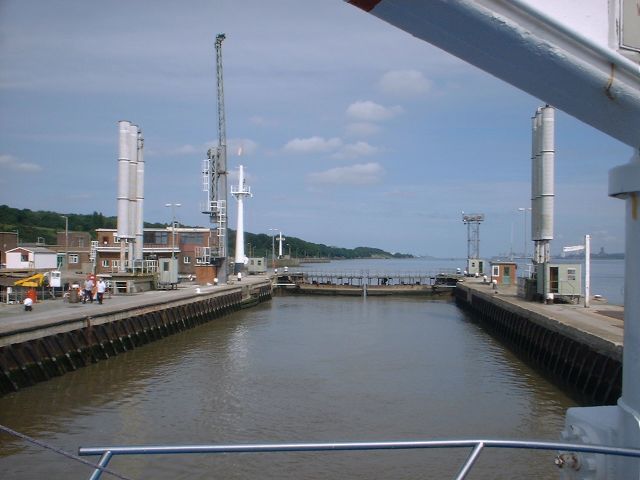
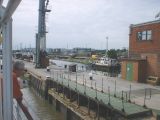
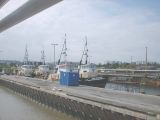
|
Each week during the summer Mersey Ferries run 'cruises' along the Manchester Ship Canal from Liverpool to Salford (and vice versa). After many years of saying I would like to go on one, I finally got round to booking on what turned out to be an extremely interesting five-and-a-half-hour trip.
After cruising up and across the Mersey from Liverpool's Pier Head we entered the canal at Eastham Locks, the first of five sets on the journey.
You can see some of the Ship Canal's own tugs tied up here.
|
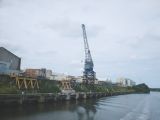
|
The Bowaters Paper Mill is the first of many industrial sites along the canal..
|
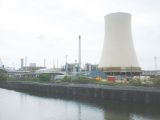
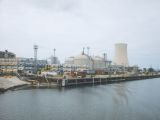
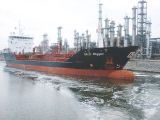
|
The Stanlow Oil Refinery is a very large and complex site. You can see the ship docked here is surrounded by a "bubble barrier" produced by a network of underwater pipes to provide an additional line of defence in case of a spillage.
|

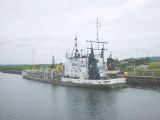
|
Canal maintenance: Here's one of the dredgers responsible for clearing tons of silt out of the canal, and some old lock gates from one of the disused locks.
|
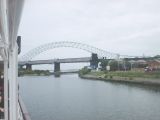
|
Next comes Runcorn. Here are the two bridges across the canal, and river - The railway bridge in front and the road bridge behind. The steelwork for the road bridge, which opened in 1968, was made by the same company that supplied the more famous Syndey Harbour bridge, they tell me. It replaced a much more interesting, but less convenient, transporter bridge which must have been fascinating to use.
|
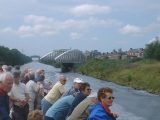
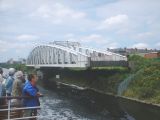
|
Our journey along the canal took us through eight swing bridges (if I've counted correctly). Here's one example, at Chester Lane in Warrington. I'm told a ship passing through the three swing bridges in Warrington causes traffic chaos in the town. On the right you can see the bridge quickly closing behind us. |
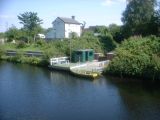
|
When the canal was built it cut through numerous public rights of way. Here is the ferry at Hulmes Bridge, one of the two remaining foot ferries where the ferryman (or woman) will take you across.
|
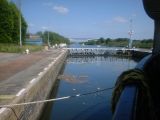
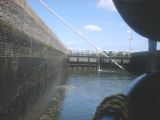
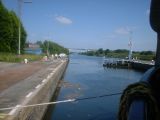
|
The five locks along the canal provide a total lift of about 60 feet (The exact figure depending on the state of the tide in the Mersey). Here's three pictures taken from the same point on the boat as we used Barton Lock.
|
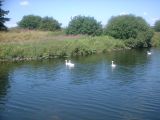
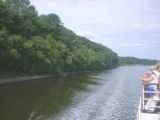
|
Although the canal was built for and is mainly associated with industry, large lengths are surprisingly green. As well as the swans I spotted mallards, geese and herons, and I'm told kingfishers are also seen.
|
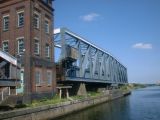
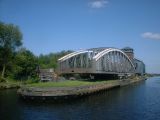
|
At Barton is a pair of swing bridges, one of which (the right hand picture) is not for a road, but for the Bridgewater Canal, and is full of water.
|
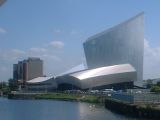
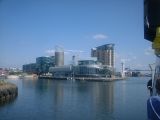
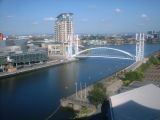
|
At the end of our cruise we arrived at Salford Quays (formerly Salford Docks!) and pass the Lowry (left) and the Imperial War Museum (right). Below is a view of the area from the viewing gallery in the Imperial War Museum. The new footbridge was lifted for us to pass underneath as we arrived. This was the only one of the lifting and swing bridges on the trip where we had to wait for it to move.
|
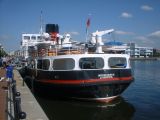
|
Finally, a picture of our ship, the Woodchurch. (One of the friends who joined me on this trip had imagined a narrowboat when I invited him on a canal cruise!)
I can recommend this fascinating "cruise" to anyone. Five and a half hours may seem like a long time, but there is always something to look at and a guide provided us with an interesting and informative commentary throughout the trip. All in all, an excellent day out.
31st July 2004
|























